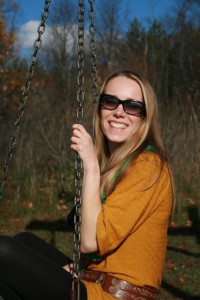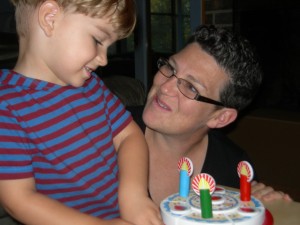Editor’s note: Celebrate Screen-Free Week, May 4-10, by turning off your screens and helping your children to unplug from digital entertainment. APtly Said will be encouraging families to connect with one another by not posting next week.
Whether or not you choose to participate in Screen-Free Week with your family — and whatever your approach to this event, whether a wholehearted all-or-nothing dive into a completely tech-free week or maybe dipping in a toe or two by going screen-free for a day or two and seeing what happens — this can be a wonderful opportunity for you and your family to get creative while exploring all kinds of fun, non-tech activities.
Yoga and mindfulness exercises, dancing, singing, story telling as well as reading are just some of a huge array of options. Maybe you have some ideas in mind already: Go ahead and try them out with your kids. If you want more inspiration, how about combining the above activities into one fun practice? How about getting your body moving along to some of your kids’ favorite stories?
Grab a favorite book. Any book will do here, but going with an easy, short and picture-based story with lots of animal characters might best facilitate the exercise. Sit down with your kids, cuddle up, read the story together. If you have kids who are already able to read by themselves, take turns in reading the story to each other page by page.
Start acting it out. Play around with voices, intonation, speed. Get into some body language. Have fun trying out different facial expressions. Move your arms and legs along with the story. Maybe at this point of the process, you will find yourselves standing up, walking, running, dancing and singing, or jumping across the room instead of sitting in the spot where you started out. Fantastic!
Now come up with matching yoga poses for the characters — imitating animals, plants, shapes like triangles, balls and houses that occur throughout the story. Take your breath along for the ride
here, taking deep, mindful inhales and exhales while playing around with different yoga poses.
Let this be a flowing process. Get creative and have fun. You don’t need to come up with a pre-drafted elaborate choreography before you present this activity to your kids. Rather, have the whole family be part of the process — inventing, creating, trying out, inspiring and surprising each other as you go.
In case you’d like to get started now and try this out, but feel overwhelmed, look for a story-based children’s yoga book at your local library or bookstore, such as Jasper’s Journey to the Yoga-Animals, and go from there. These books help by inspiring parents to read to their kids and move along with them, exploring yoga poses and mindful breathing exercises while listening to a fun story.
Whatever you decide to do during Screen-Free Week, I hope you and your kids have tons of fun along the way!




 My son turned three yesterday. As I’ve done every year since his birth, I spent the week leading up to the actual day recalling what I was doing and thinking, and who I even was, right before he was born. All of that anticipation about what our lives would be like was the beginning of my mindfulness practice. I grew up in Taos, New Mexico, where my parents moved in 1969 to study with a guru. So I grew up with the “be here now” philosophy but never managed it. Instead I felt bad that I couldn’t manage to live in the present moment, couldn’t meditate, and honestly couldn’t even sit still.
My son turned three yesterday. As I’ve done every year since his birth, I spent the week leading up to the actual day recalling what I was doing and thinking, and who I even was, right before he was born. All of that anticipation about what our lives would be like was the beginning of my mindfulness practice. I grew up in Taos, New Mexico, where my parents moved in 1969 to study with a guru. So I grew up with the “be here now” philosophy but never managed it. Instead I felt bad that I couldn’t manage to live in the present moment, couldn’t meditate, and honestly couldn’t even sit still.